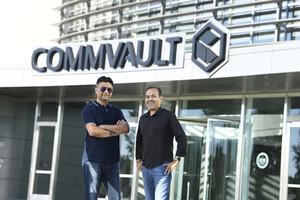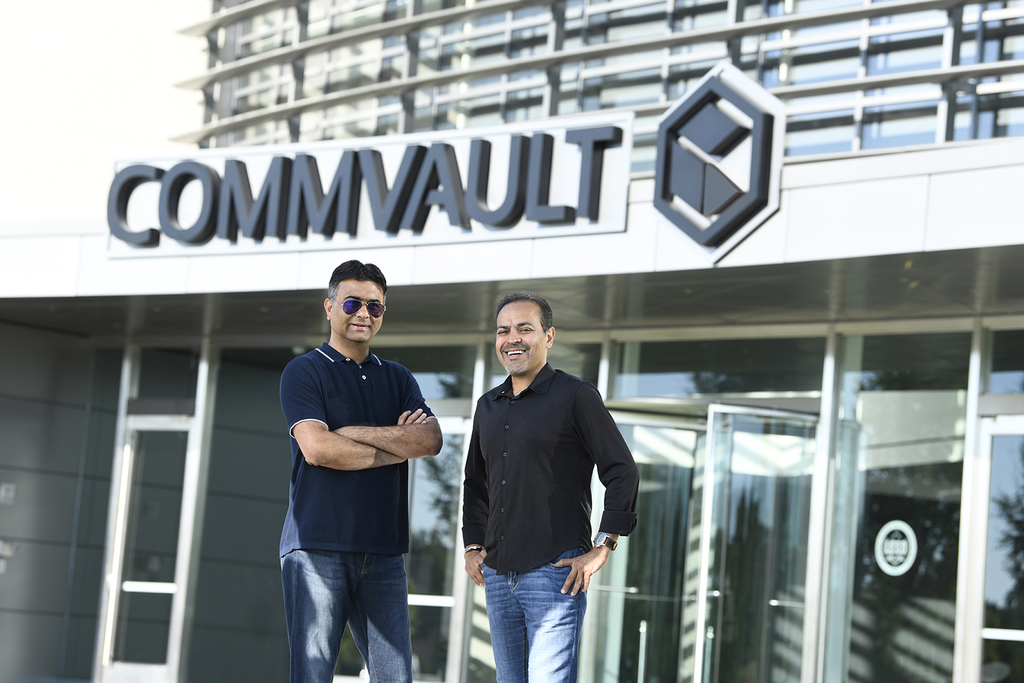Commvault Buys Hedvig For $225 Million To Take On Secondary Startups

Commvault announced on Wednesday 4 September that it will purchase Hedvig for $225 million total consideration.
$225 million represents a roughly 4.3x multiple on the $52 million raised by Hedvig so far (according to Crunchbase).

In my opinion, a 4.3x return is a fantastic exit for Hedvig and its investors. Whether the deal is worth it for Commvault is not a straightforward question to answer, as much depends on how Commvault manages the integration of Hedvig's technology into its offerings.
Commvault's existing HCI stack for its HyperScale product is based on Red Hat Enterprise Linux and Gluster, and it costs Commvault money to license this setup from Red Hat, now IBM. Replacing this Red Hat/IBM tech stack with Hedvig helps Commvault on two fronts: it can stop paying IBM licensing fees, and it can use the multi-protocol front-end of Hedvig to provide more direct access to data stored on the scale-out storage.
It's this second aspect that is the most important to understand.
Commvault added HyperScale to its portfolio a couple of years ago in response to the success of Rubrik and Cohesity, which had been winning lots of enterprise business with their easy-to-use and easy-to-buy appliances. Data protection is a kind of insurance, so customers just want to solve problem with as little pain as possible, and then concentrate on their main business, which is rarely anything to do with data protection.
Compared to more traditional approaches to purchase and scaling—such as Commvault's previous offerings—the new startups were less painful, hence their win rates. Commvault had to respond, and it did.
But Commvault's response, to use a popular ice-hockey analogy, was to move to where the puck was at the time, not to where the puck was going. If we take a look at what Cohesity in particular has been up to since, the reason for the Hedvig acquisition becomes clearer.
Cohesity has long harboured ambitions of being about much more than data protection. Its early positioning was about something termed copy data management, a horrible phrase that I'm glad they stopped using.
Way back in early 2016, Cohesity was talking about becoming a unified secondary storage platform, and it has held true to this vision since then.
Hedvig also wanted to be a unified storage platform, but was trying to go after primary storage as its prime use-case. My information says that it couldn't quite match the performance requirements necessary to compete well, and so ended up trapped in a kind of limbo between primary and secondary storage, not really suiting either situation well.
But coupled to a well established data protection software company, Hedvig could provide Commvault with something that a plain HCI storage backend couldn't: other data services for secondary data, accessible directly from the scale-out storage. And Commvault provides a clear and understandable reason to use Hedvig's storage: a place to store data sourced from backups.
> “Everybody in the data management space has their own secondary storage platform.” — Don Foster, VP of Storage Solutions, Commvault

Backup is the gateway mechanism to get data onto these platforms, and both Cohesity and Rubrik started there, and only after succeeding with this first use-case did they start adding other data services like analytics to work with the data that gets backed to their platforms. The foundations of these systems are hyperconverged appliances that combine compute and storage close to one another, in a scale-out fashion. This is ideal for data analysis workloads, which is why it's the same pattern used by offerings like Hadoop, Cloudera, and Apache Spark.
Commvault has had these same ambitions for years. Back in 2013 Commvault was trying to pitch Simpana 10 as a single data source, the Content Store, that you could use for other things since the backup data was there anyway.
Unfortunately for Commvault, both the market and the technology weren't ready, not with the architecture at the time. Flash storage was far too expensive to be available in large enough quantities to provide an affordable caching layer for enough data for analytics to be usable, and the desire for analytics hadn't reached the kind of critical mass it has now.
But now the raw technology, the architectural patterns, and the market demand are all sufficiently mature that enough customers are willing to pay real money to solve the problem. The kind of money that can drive the massive valuations we're seeing for the new data protection startups with broader data ambitions.
That's the landscape that Commvault is playing on. Buying Hedvig means Commvault can start to offer a secondary-storage-plus solution beyond mere data protection much earlier than it otherwise could. That's where a big chunk of the enterprise market is heading, and Commvault doesn't have time to build this in-house before its startup rivals acquire a huge share of this rapidly developing market.
Being a fast-follower is fine, but I'd like to see Commvault be a little less reactionary, demonstrating good situational awareness of the competitive landscape and an ability to make strategically sound moves a little sooner. Hopefully this acquisition is the start of a refreshed Commvault under new CEO Sanjay Mirchandani.
Storage is never dull!
